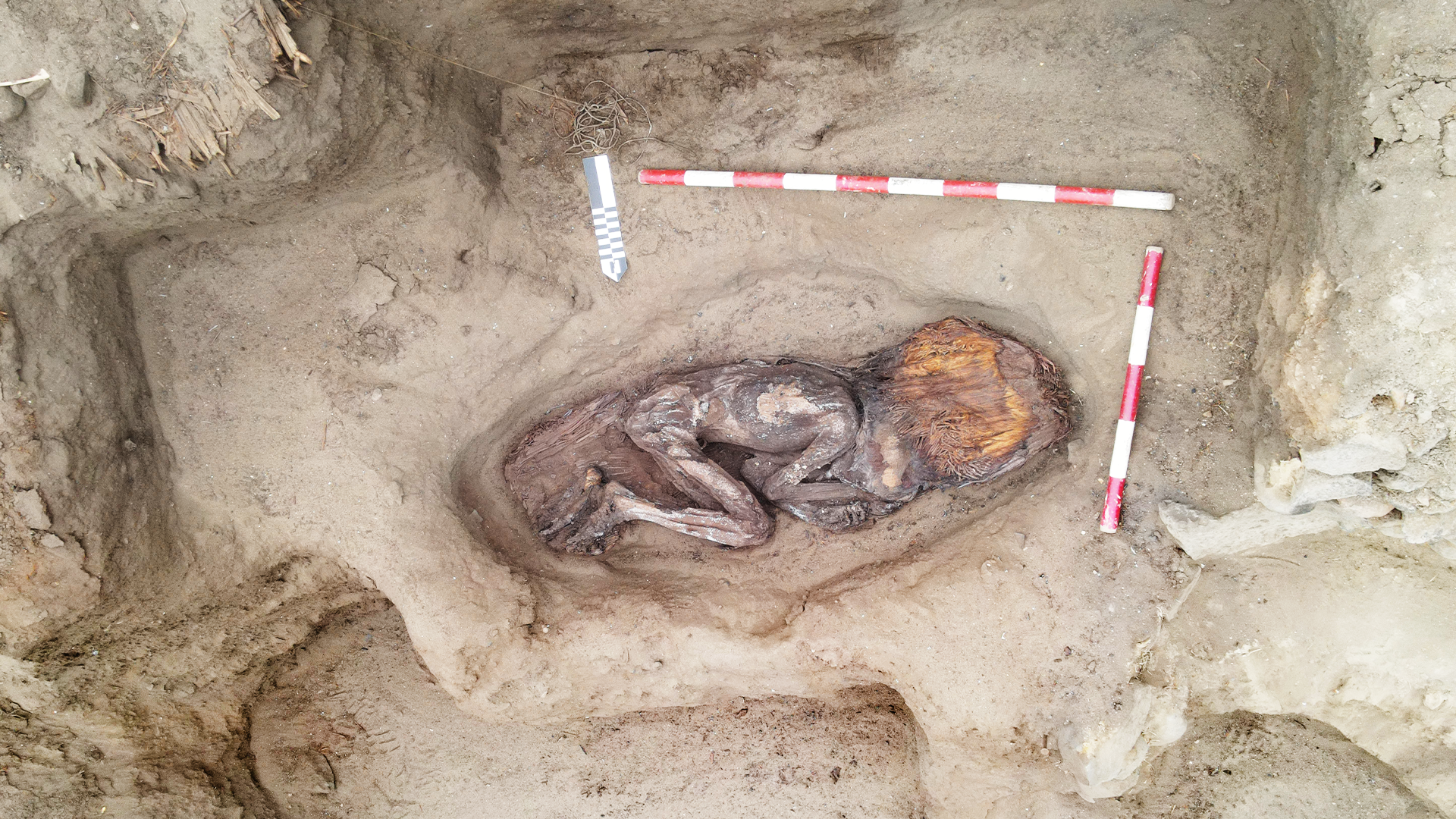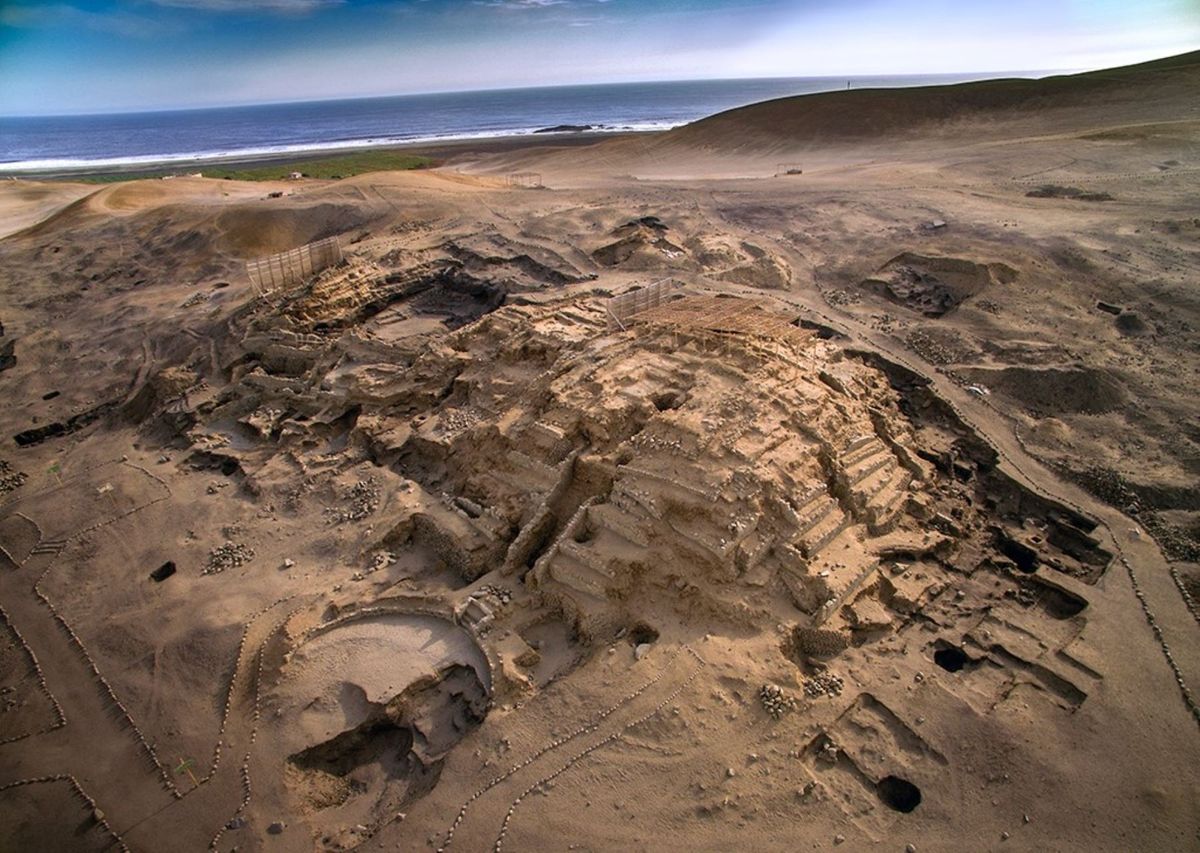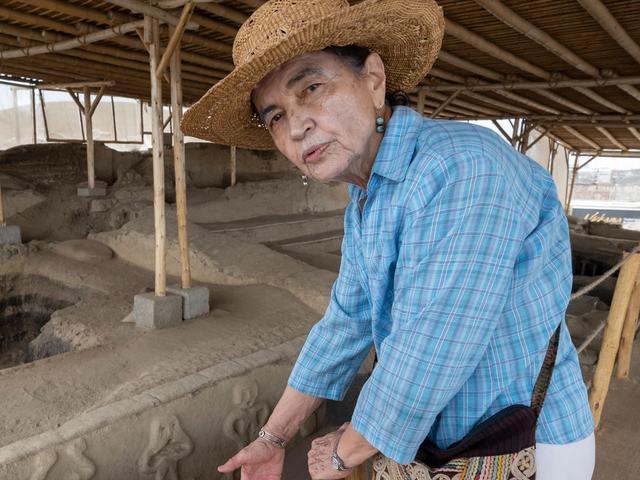A recent archaeological discovery at the site of Áspero, an ancient coastal settlement belonging to the Caral civilisation on Peru’s coast, sheds new light on women’s importance in this historic society. The Caral civilisation, considered the oldest in the Americas, dates back approximately 5,000 years. The finding has disinterred the surprisingly well conserved remains of an elite woman, offering valuable insight into the social structures and complex trade networks of a culture that was contemporaneous with civilisations such as Ancient Egypt and Mesopotamia.
The body of the woman, 1.5 m tall and estimated to be between the ages of 25 and 30 at the time of her death, was found in a carefully prepared grave covered with a piece of elaborate embroidery featuring blue macaw feathers. The body’s exceptional state of conservation—with skin, hair and nails still intact—is relatively uncommon in the region, where typically only skeletal remains are recovered. The foetal position in which she was found, with legs folded against the torso, suggests ritualised funerary practices associated with high-status individuals.
“The characteristics of the offerings and the funerary treatment indicate that the woman belonged to a high social class,” a representative of Peru’s Ministry of Culture stated, “further contributing to the evidence of women’s leading role in this ancient society.”

Courtesy Andina Peruvian News Agency
The funerary bundle with which the woman was buried is particularly revealing. In it, experts found numerous offerings of great value—including four reed baskets, a needle with incised designs, a snail shell from the Amazon River, the beak of a toucan adorned with inlaid green and brown beads, a wool textile, a fishing net, more than 30 sweet potatoes and weaving tools. The variety and provenance of these objects is significant. The snail shell from the Amazon and the toucan beak point to a vast trade network that connected the coast of ancient Peru with the jungle, while the presence of wool suggests ties to the Andes.
The exquisite fabric embroidered with macaw feathers, crisscrossing the bundles of plant fibres in which the body was enveloped, is one of the oldest examples of featherwork from the Andes. This artefact, along with the headdress of intertwined fibres that adorned the woman’s head, emphasises the high level of development in specialised techniques achieved by the Caral civilisation.
David Palomino, the head archaeologist at Áspero, declared that “the use of these ornaments, taken from birds, was unknown until the rise of the Chimú (8th-15th centuries AD) and Inca cultures (15th-16th centuries AD), which emerged much later than the Caral (established between 3,000BC and 1,800BC)”.
The finding joins other discoveries at Áspero, including the tombs of two elite individuals discovered in 2016 and 2019 a short distance away, along with the identification of 22 architectural complexes at the site.
The discovery’s importance lies in its support of growing evidence of women’s leading role in Caral society. Like findings from other ancient Peruvian cultures dating from later periods, such as the Lady of Cao (AD400) and the Priestesses of San José de Moro (AD800), this burial at Áspero highlights the key roles women occupied in the social structure, possibly with religious, political or economic connotations.
Áspero, located less than a kilometre from the Pacific Ocean, has been the subject of intense research for the past 20 years. Archaeologists have revealed a society that, despite its antiquity and isolation compared to other contemporaneous civilisations, achieved a notable level of specialised cultural development. Future analyses of the artefacts found in this tomb promise to provide more information on the health, diet and funeral practices of the Caral people, solidifying their position as one of the foundational civilisations of the Americas.



